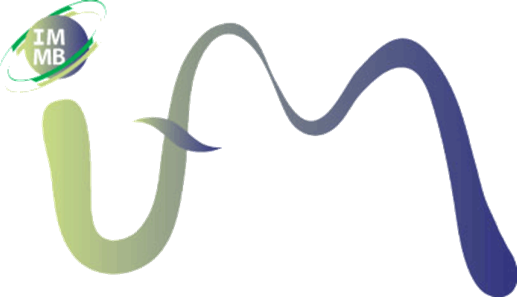Biotechnological production of vanillin
Vanillin is the characteristic aroma component of the vanilla pod and frequently used for the production of flavors for foods and fragrances for perfumes. "Artificial" or "nature-identical" vanillin is mostly produced from petrochemicals like guaiacol and from lignin. Due to the increasing demand for healthy and natural food, there was a growing interest to produce vanillin from natural raw materials by biotransformation, which can then be regarded as a "natural" aroma chemical.

In the workgroup Steinbüchel a process for vanillin production, based on the biotransformation of eugenol, has been investigated. Eugenol, which is the main component of the essential oil of the clove tree Syzygium aromaticum, was utilized by a Pseudomonas strain.
Although eugenol has an antibacterial property and is therefore frequently used in dental medicine, it was degraded by this bacterium. The catabolism proceeds via coniferyl alcohol, coniferyl aldehyde, ferulic acid, vanillin, vanillic acid and protocatechuic acid, which is further metabolized by ortho-cleavage. During a screening for microorganisms, which were able to convert ferulic acid to vanillin, a Gram positive bacterium of the genus Amycolatopsis was isolated.
The
physiological and genetic basis of the vanillin production process based
on the biotransformation of eugenol or ferulic acid by these strains
have been investigated. We identified all genes, which are responsible
for the degradation of eugenol or ferulic acid in these bacteria,
respectively. The essential involvement of these genes in ferulic acid
and eugenol catabolism was verified by gene expression in E. coli and by
gene disruption experiments.
Objectives were...
- Detailed investigation of catabolic pathways for eugenol and ferulic acid degradation
- Identification of genes essentially involved in these pathways
- Identification and biochemical characterization of involved enzymes
- Optimization of production strains by genetic, enzyme, and metabolic engineering
Methods and strategies
- Screening for new microorganisms, able to grow with eugenol and/or ferulic acid.
- Isolation of mutants exhibiting defects in corresponding pathways.
- Identification of essential genes by complementation analysis.
- Cloning end expression of genes in heterologous hosts.
- Site directed mutagenesis of relevant genes.
- Purification and biochemical characterization of relevant enzymes.
- Analysis of sequences from the different genome sequencing projects with respect to relevant genes, to identify new candidates for biotransformation reactions.
Keywords
Biotransformation, Eugenol, Coniferyl alcohol, Coniferyl aldehyde, Ferulic acid, Feruloyl-CoA, Vanillin, Vanillic acid, Protocatechuic acid, Pseudomonas, Amycolatopsis, Delftia, Bacillus, Eugenol hydroxylase, Flavocytochrome c, Coniferyl alcohol dehydrogenase, Coniferyl aldehyde dehydrogenase, Feruloyl-CoA synthetase, Enoyl-CoA hydratase/aldolase, Vanillin dehydrogenase| Coworkers involved in the project | Coorperations and financila support | |
| Stefanie Kellner Horst Priefert Alexander Steinbüchel Jörg Overhage Rainer Plaggenborg Sandra Achterholt Kerstin Brandt Andreas U. Kresse Daniela Rehder |
Symrise GmbH
& Co. KG (Holzminden) (Fusion of the former collaboration partner
Haarmann & Reimer GmbH with the company Dragoco) European community | |
Publications
I Publications in peer reviewed journals (original contributions)
- Plaggenborg,
R., J. Overhage, A. Loos, J. A. C. Archer, P. Lessard, A. J. Sinskey,
A. Steinbüchel, and H. Priefert. 2006. Potential of Rhodococcus strains for
biotechnological vanillin production from ferulic acid and eugenol.
Appl. Microbiol. Biotechnol., accepted for publication.
- Overhage, J., A. Steinbüchel, and H. Priefert. 2003. Highly efficient biotransformation of eugenol to ferulic acid and further conversion to vanillin in recombinant strains of Escherichia coli. Appl. Environ. Microbiol. 69:6569-6576.
- Plaggenborg, R., J. Overhage, A. Steinbüchel, and H. Priefert. 2003. Functional analyses of genes involved in the metabolism of ferulic acid in Pseudomonas putida KT2440. Appl. Microbiol. Biotechnol. 61:528-535.
- Overhage, J., A. Steinbüchel, and H. Priefert. 2002. Biotransformation of eugenol to ferulic acid by a recombinant strain of Ralstonia eutropha H16. Appl. Environ. Microbiol. 68:4315-4321.
- Priefert, H., S. Achterholt, and A. Steinbüchel. 2002. Transformation of the Pseudonocardiaceae Amycolatopsis sp. HR167 is highly dependent on the physiological state of the cells. Appl. Microbiol. Biotechnol. 58:454-460.
- Plaggenborg, R., A. Steinbüchel, and H. Priefert. 2001. Isolation and molecular characterization of genes essential for growth of Delftia acidovorans with ferulic acid. FEMS Microbiol. Lett. 205:9-16.
- Brandt, K., S. Thewes, J. Overhage, H. Priefert, and A. Steinbüchel. 2001. Characterization of the eugenol hydroxylase genes (ehyA/ehyB) from the new eugenol degrading Pseudomonas sp. strain OPS1. Appl. Microbiol. Biotechnol. 56:724-730.
- Achterholt, S., H. Priefert, and A. Steinbüchel. 2000. Identification of Amycolatopsis sp. strain HR167 genes involved in the bioconversion of ferulic acid to vanillin. Appl. Microbiol. Biotechnol. 54:799-807.
- Priefert, H., J. Overhage, and A. Steinbüchel. 1999. Identification and molecular characterization of the eugenol hydroxylase genes (ehyA/ehyB) of Pseudomonas sp. strain HR199. Arch. Microbiol. 172:354-363.
- Overhage, J., H. Priefert, and A. Steinbüchel. 1999. Biochemical and genetic analysis of the ferulic acid catabolism in Pseudomonas sp. strain HR199. Appl. Environ. Microbiol. 65:4837-4847.
- Overhage, J., H. Priefert, J. Rabenhorst, and A. Steinbüchel. 1999. Biotransformation of eugenol to vanillin by a mutant of Pseudomonas sp. strain HR199 constructed by disruption of the vanillin dehydrogenase (vdh) gene. Appl. Microbiol. Biotechnol. 52:820-828.
- Overhage, J., A. U. Kresse, H. Priefert, H. Sommer, G. Krammer, J. Rabenhorst, and A. Steinbüchel. 1999. Molecular characterization of the genes pcaG and pcaH, encoding protocatechuate 3,4-dioxygenase, which are essential for the vanillin catabolism in Pseudomonas sp. strain HR199. Appl. Environ. Microbiol. 65:951-960.
- Achterholt, S., H. Priefert, and A. Steinbüchel. 1998. Purification and characterization of the coniferyl aldehyde dehydrogenase from Pseudomonas sp. strain HR199 and molecular characterization of the gene. J. Bacteriol. 180:4387-4391.
- Priefert, H., J. Rabenhorst, and A. Steinbüchel. 1997. Molecular characterization of genes of Pseudomonas sp. strain HR199 involved in the bioconversion of vanillin to protocatechuate. J. Bacteriol. 179:2595-2607.
II Review arcticles in peer reviewed journals or books
- Priefert, H., J. Rabenhorst, and A. Steinbüchel. 2001. Biotechnological production of vanillin. Appl. Microbiol. Biotechnol. 56:296-314.


